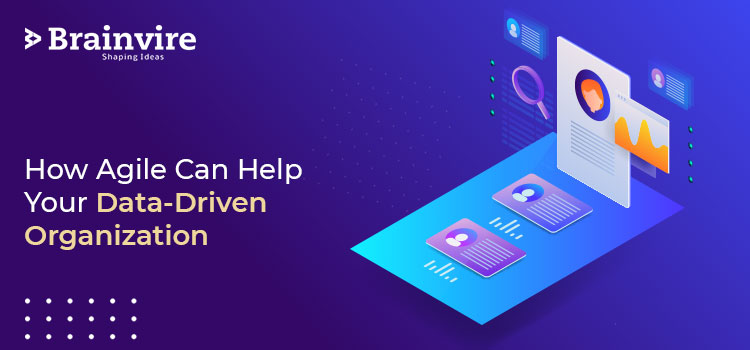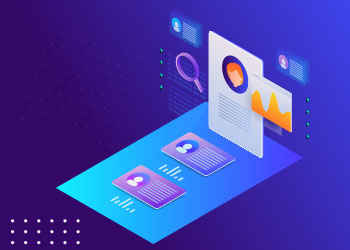
The rising competition is triggering organizations to adopt data-driven approaches by leveraging technologies like analytics and machine learning. But, simply adopting these technologies is not enough to gain a competitive advantage.
For robust, actionable insights through analytics, one needs strong DataOps, Data Science, and governance programs to address issues of data integration, data quality, security, and privacy. This in turn requires bringing together multiple technologies, stakeholders, and people with diverse backgrounds. Be it supply chain automation or retail solution, organizations are resorting to agile principles for improved productivity.
Agile methodology is nothing but a software development practice that revolves around the idea of continuous iteration. A disciplined and effective process, it promotes continuous planning, testing, adaptation, collaboration, and evolutionary development. Partnering with an AEM software development company can further enhance agile implementation by streamlining content management and digital workflows. Agile methodologies can help get and process feedback for improved application of analytics, DataOps, and data science. However, applying these methodologies requires redefining some basic concepts.
In this article, we will explore ways to employ agile to DataOps and data science.
Ways to Apply Agile to Data Science and DataOps
Redefining Agile Process
Data science and DataOps are the basis of developing and deploying powerful data-based solutions, including analytics and machine learning. As mentioned before, agile methodologies need to be reinvented in ways to be successfully implemented to analytics and machine learning lifecycle. So, what are these changes? Let’s see:
- Replacing the agile product owner with an agile data science team led by an analytics professional who puts insights into actions to drive business outcomes.
- On a broader scale, data science teams typically provide actionable insights, DataOps automation, and improved data quality and security. The analytics professional and the team of agile data scientists should take care of all the requirements for these in the backlog.
- The team of agile data science should include people from different disciplines such as DataOps engineers, database developers, data scientists, data stewards, data governance professionals, machine learning experts, etc. This is dependent on the scope and nature of the work and the analytics involved.
Agile in Data Science and DataOps
Team interaction, collaboration, learning, and adaptation are some of the values that form the basis of agile methodologies. As you can see, the basic framework for implementing these methodologies mentioned above work on these aspects. Once this is set, the agile team can get to work, primarily focusing on three tasks. This includes:
Developing and Improving Dashboards, Analytics, and Data Visualization
Information systems are of no use if you cannot derive insights and take advantage of them to scale the heights of success. For instance, a sales analytics tool that does not answer the basic question of what areas have seen the most amount of activity by a sales representative in the last three months renders unuseful.
User stories are nothing but a description of one or more features of the software in informal and natural language. When developing software using Agile methodologies, they are used to capture the description from the end user’s perspective. When applying agile methodologies to data science and DataOps, these stories that deliver dashboards, analytics, and data visualizations must answer important questions of:
- Who are the end-users?
- What is the problem the end-user is facing?
- Why is the problem important?
To get feedback from end-users you can share a simple Power BI or Tableau dashboard. Power BI consulting services can help you out with this. This will help the data science team know if the dashboard addresses their issues. The product owner can then work on improvements as a priority, enhancing the overall software.
Creating and Refining Machine Learning Models
The development of machine learning models involves various steps. This includes data segmentation, data tagging, feature extraction, running of data sets through multiple algorithms and configurations.
To prepare data for use in model development, Agile user stories might be recorded by the data science team when implementing Agile methodologies. They can then create separate stories for each experiment in the development process. This eases the review process as teams can decide on the next priorities.
Now, these different stories also help move models from experimentation to production. They are DevOps for machine learning that is likely to include scripting of infrastructure, automate model deployments and monitor production. Once in the production stage, the models might require re-engineering with new sets of data coming in.
Finding New Data Sources and Cleaning Old Ones
As time evolves, the data used might become redundant. To keep data warehouses and lakes up to date with valuable information, Agile data science teams should be on a constant lookout for new data sources.
Analyst owners should include user stories to search for new data sources, validate data sets, and integrate them into the primary data repository. While doing so, Agile teams must take into account automating data integration, quality check to validate data sets, and linking the new information with master data sources. This helps add new perspectives on the subject for strategizing and better decision-making.
For instance, getting new insights into the environment that impacts purchase decisions can help organizations direct their marketing efforts in the right direction.
In addition to this, Agile teams should also capture and prioritize data debts. Because of the lack of control related to data validation and cleaning rules, many organizations have loads of redundant data occupying their data warehouses and lakes. Agile teams must devise a quick way to address this issue of data debt by prioritizing it in the backlog.
Conclusion
As there is a rising demand around analytics and data regulation, implementing Agile methodologies can serve organizations by providing them with tools to plan and deliver data-driven solutions. If you have not yet thought of implementing Agile, it is time you do so.
Related Articles
-
Joomla Struggles With WordPress & Drupal To Hold Its Position
Joomla!, a widely known open source CMS (Content Management System) has been a backbone for many of the popular websites, including MTV, Harvard University, The Hill and more, across the
-
IaaS vs. PaaS vs. SaaS: Everything you need to know
In recent years, Cloud computing has grown in popularity. Its exponential growth has accompanied society’s digital transformation in the 21st century. It is predicted that around 83 percent of company
-
5 Phenomenal Use-cases of Elastic Search Encompassing Different Industry Verticals
Talking About 5 Phenomenal Use-cases of Elastic Search Encompassing Different Industry Verticals, Since the dawn of the internet age, ‘searching’ stuff virtually has become a rocket science in itself. Google,



